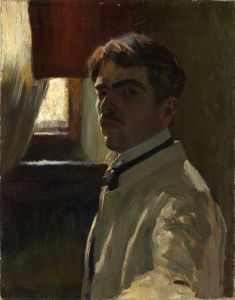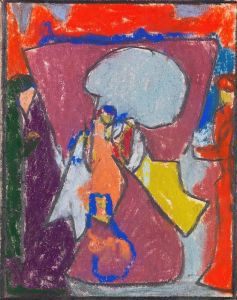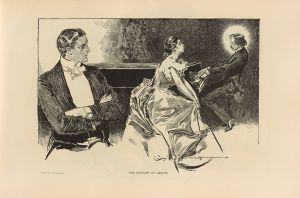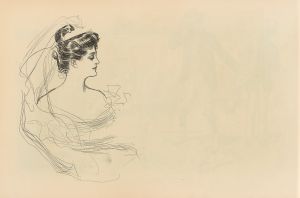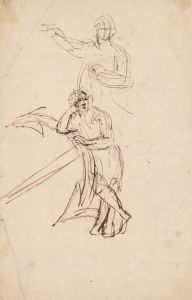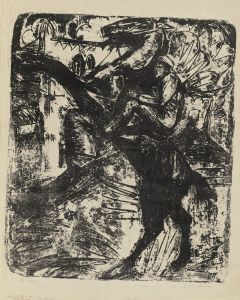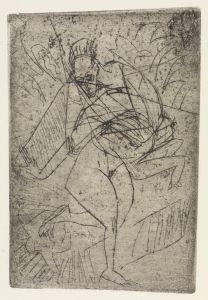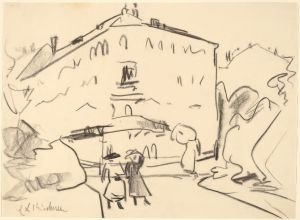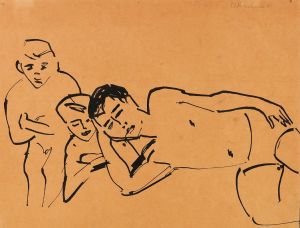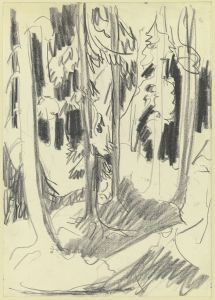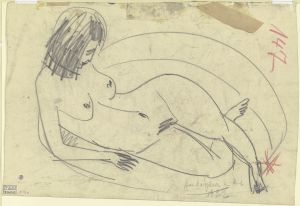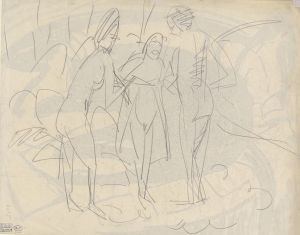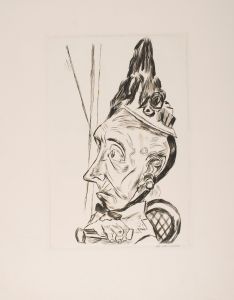
Mädchenkopf
A hand-painted replica of Ernst Ludwig Kirchner’s masterpiece Mädchenkopf, meticulously crafted by professional artists to capture the true essence of the original. Each piece is created with museum-quality canvas and rare mineral pigments, carefully painted by experienced artists with delicate brushstrokes and rich, layered colors to perfectly recreate the texture of the original artwork. Unlike machine-printed reproductions, this hand-painted version brings the painting to life, infused with the artist’s emotions and skill in every stroke. Whether for personal collection or home decoration, it instantly elevates the artistic atmosphere of any space.
Ernst Ludwig Kirchner (1880-1938) was a German expressionist painter and one of the founding members of the artist group Die Brücke (The Bridge), which played a pivotal role in the development of modern art in the early 20th century. One of his notable works is "Mädchenkopf," which translates to "Head of a Girl" in English.
"Mädchenkopf" is a portrait that exemplifies Kirchner's distinctive style, characterized by bold colors, dynamic brushstrokes, and a focus on emotional expression. The painting captures the head and shoulders of a young girl, rendered with a sense of immediacy and intensity that is typical of Kirchner's work. The use of vibrant, non-naturalistic colors and the emphasis on the psychological depth of the subject reflect the influence of both the Fauvist movement and the German expressionist ethos.
Kirchner's approach to portraiture often involved a departure from realistic representation, aiming instead to convey the inner life and emotional state of his subjects. In "Mädchenkopf," this is evident in the exaggerated features and the almost abstract quality of the composition. The girl's face is depicted with simplified forms and strong, angular lines, which create a sense of tension and vitality. The background is typically sparse, ensuring that the viewer's attention remains focused on the subject's face.
The painting is also notable for its exploration of color. Kirchner employs a palette of contrasting hues to create a sense of depth and movement. The interplay of warm and cool tones adds to the emotional impact of the portrait, suggesting a complex inner world. This use of color is a hallmark of Kirchner's work and reflects his interest in the expressive potential of the medium.
"Mädchenkopf" was created during a period of significant personal and artistic development for Kirchner. After founding Die Brücke in 1905, he and his fellow artists sought to break away from traditional academic art and explore new forms of expression. They were influenced by a variety of sources, including African and Oceanic art, which they saw as more direct and unmediated forms of creativity. This influence is evident in the stylized features and the raw, almost primal energy of Kirchner's portraits.
Throughout his career, Kirchner faced numerous challenges, including struggles with mental health and the impact of World War I. Despite these difficulties, he remained a prolific and influential artist. His work, including "Mädchenkopf," continues to be celebrated for its innovative approach and its profound impact on the development of modern art.
Today, "Mädchenkopf" is held in various private collections and museums, where it is appreciated both for its artistic merit and its historical significance. Kirchner's legacy as a pioneer of expressionism and a key figure in the early 20th-century art world is firmly established, and his works remain a subject of study and admiration.
In summary, "Mädchenkopf" by Ernst Ludwig Kirchner is a powerful example of expressionist portraiture, showcasing the artist's unique style and his ability to convey deep emotional resonance through bold colors and dynamic forms.





